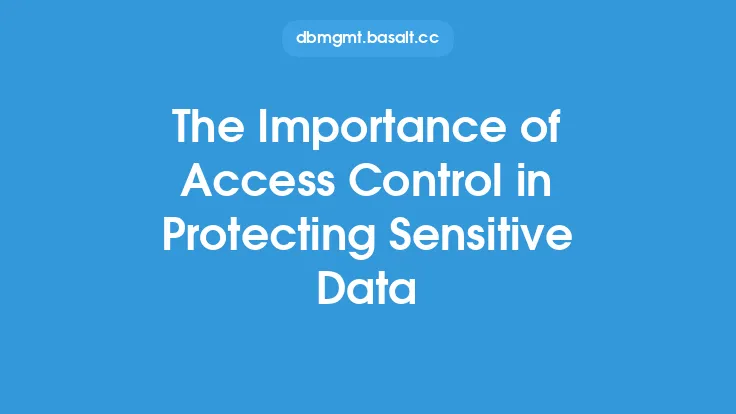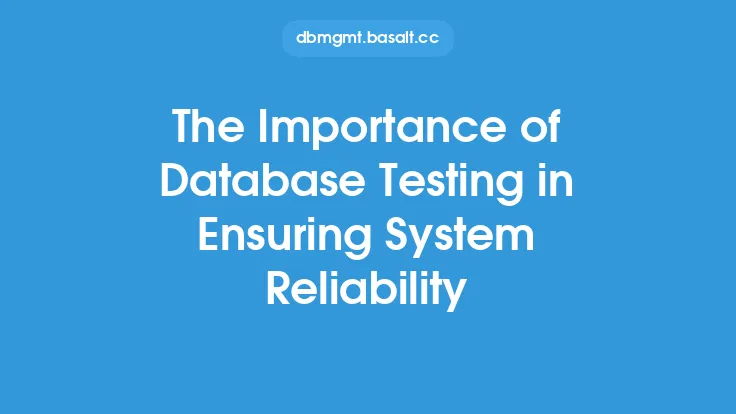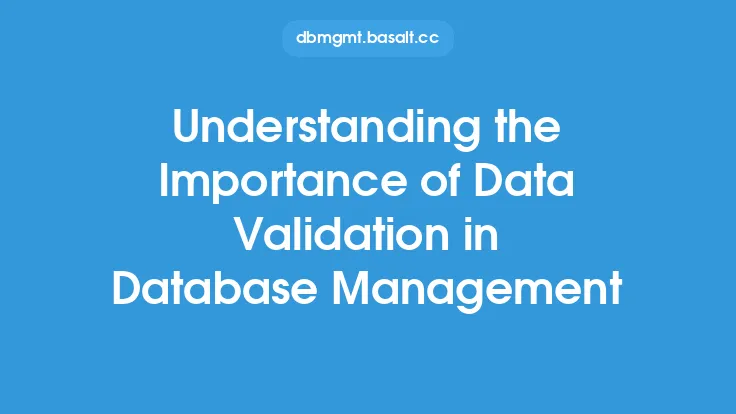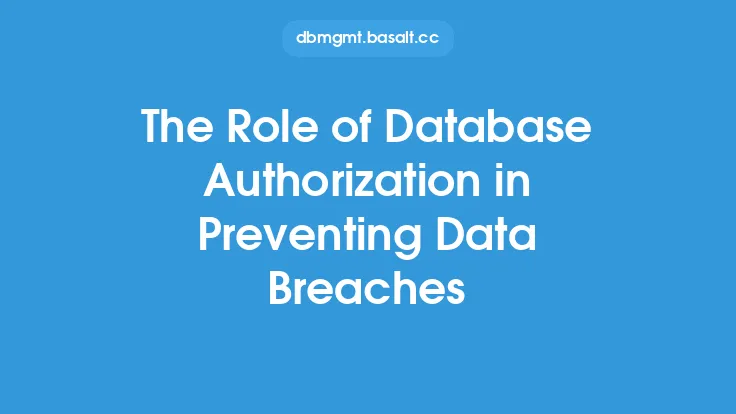In today's digital age, the importance of protecting sensitive information cannot be overstated. With the increasing number of data breaches and cyber attacks, organizations are under immense pressure to ensure the confidentiality, integrity, and availability of their data. One crucial aspect of database security that has gained significant attention in recent years is data masking. Data masking is a technique used to hide or obscure sensitive data, making it inaccessible to unauthorized users. In this article, we will delve into the importance of data masking in protecting sensitive information and explore its significance in the context of database security.
Introduction to Data Masking
Data masking is a data protection technique that involves replacing sensitive data with fictional or anonymized data, making it unusable to unauthorized users. This technique is used to protect sensitive information such as credit card numbers, social security numbers, and personal identifiable information (PII). Data masking can be applied to various types of data, including structured and unstructured data, and can be used in a variety of environments, including production, development, and testing.
The Risks of Sensitive Data Exposure
The exposure of sensitive data can have severe consequences for organizations, including financial losses, reputational damage, and legal liabilities. Sensitive data exposure can occur due to various reasons, including data breaches, insider threats, and human error. According to a recent study, the average cost of a data breach is approximately $3.9 million, highlighting the significance of protecting sensitive information. Moreover, sensitive data exposure can also lead to non-compliance with regulatory requirements, resulting in fines and penalties.
How Data Masking Protects Sensitive Information
Data masking protects sensitive information by replacing it with fictional or anonymized data, making it inaccessible to unauthorized users. This technique ensures that even if an unauthorized user gains access to the data, they will not be able to use it for malicious purposes. Data masking can be applied at various levels, including at the database level, application level, or network level. Additionally, data masking can be used in conjunction with other security measures, such as encryption and access controls, to provide an additional layer of protection.
The Benefits of Data Masking
Data masking offers several benefits, including improved data security, reduced risk of data breaches, and compliance with regulatory requirements. By masking sensitive data, organizations can ensure that their data is protected from unauthorized access, reducing the risk of data breaches and cyber attacks. Moreover, data masking can also help organizations comply with regulatory requirements, such as the General Data Protection Regulation (GDPR) and the Payment Card Industry Data Security Standard (PCI DSS).
Technical Aspects of Data Masking
From a technical perspective, data masking involves replacing sensitive data with fictional or anonymized data using algorithms and techniques such as encryption, tokenization, and hashing. Data masking can be implemented using various tools and technologies, including data masking software, database management systems, and programming languages. Additionally, data masking can be applied to various types of data, including relational databases, NoSQL databases, and big data environments.
Real-World Applications of Data Masking
Data masking has various real-world applications, including in the financial, healthcare, and e-commerce industries. For example, a financial institution may use data masking to protect sensitive customer information, such as credit card numbers and social security numbers. Similarly, a healthcare organization may use data masking to protect patient data, such as medical records and personal identifiable information. Moreover, an e-commerce company may use data masking to protect sensitive customer information, such as credit card numbers and addresses.
Challenges and Limitations of Data Masking
While data masking is an effective technique for protecting sensitive information, it also has some challenges and limitations. For example, data masking can be complex and time-consuming to implement, especially in large and complex environments. Additionally, data masking may not be effective against all types of attacks, such as insider threats and advanced persistent threats. Moreover, data masking may also have an impact on data usability and functionality, requiring organizations to balance security with usability.
Conclusion
In conclusion, data masking is a crucial aspect of database security that plays a significant role in protecting sensitive information. By replacing sensitive data with fictional or anonymized data, data masking ensures that unauthorized users cannot access or use sensitive information for malicious purposes. While data masking has several benefits, including improved data security and compliance with regulatory requirements, it also has some challenges and limitations. As organizations continue to grapple with the increasing threat of data breaches and cyber attacks, data masking is likely to become an essential component of their database security strategies. By understanding the importance of data masking and its technical aspects, organizations can take the first step towards protecting their sensitive information and ensuring the confidentiality, integrity, and availability of their data.





